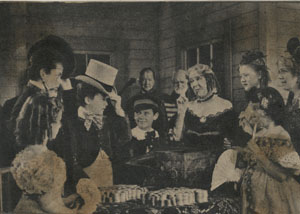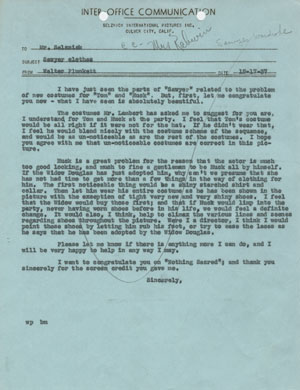
Naturally, the costume designer works closely with the actor, director, production designer, cinematographer, and others on the production team. Not only must the costume support and enhance the actor’s and director’s interpretation of the character, but it must also allow the actor’s movement and withstand the rigors of shooting. Furthermore, costume design must be coordinated across all the film’s characters, while color and texture must integrate into the overall design.
Costume designer Walter Plunkett’s rationale for his costume decisions are in keeping with the classical Hollywood tradition and show why he is now regarded as one of the great designers from Hollywood’s golden age.

In an advance publicity still, published in an unidentified fan magazine, Tom Sawyer is wearing the hat that Plunkett objected to. This portion of the final scene was cut from the film before the original release.
These are just two items from the “Costume Design” section of the Making Movies exhibition, which opens February 9 at the Ransom Center.
For Central Texas readers, join us on the red carpet for a special opening celebration for the Making Movies exhibition on Friday, February 12.
